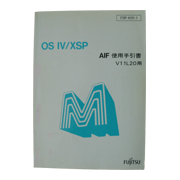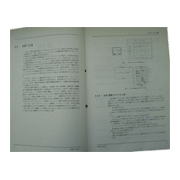OSIV/XSP was the successor operating system (hereinafter “OS”) to Fujitsu’s two OSs: medium-scale general-purpose OS OSIV/ESPIII, and large-scale general-purpose OS OSIV/X8 FSP. It was announced in November 1990.
Since completing the lineup from medium to super-large computers at the announcement of the FACOM M-100 series medium-scale computers in 1977, Fujitsu had been providing three types of OSs ? medium, large and super-large ? for the M series. With the announcement of OSIV/XSP, the OSs of the M series were integrated into two types, super-large OSIV/MSP and large OSIV/XSP.
The following describes the background to OSIV/XSP development and the features of OSIV/XSP:
With the announcement of the medium-scale general-purpose OS OSIV/ESPIII in June 1984, the general-purpose OSs for the M series consisted of three types: OSIV/F4 MSP, OSIV/X8 FSP and OSIV/ESPIII. Since OSIV/ESPIII was developed based on OSIV/X8, the extent to which the software of the M series was shared across the three OSs was increasing. In addition, due to promotion of developing common function among OSs, the differences between OSIV/ESPIII and OSIV/X8 FSP in terms of functions and performance were being reduced.
However, looking ahead to the 1990s, it was predicted that the linkage between open networks and between servers connected to networks would be viewed as more important. Further it was predicted that for OSIV/ESPIII to cope with the spread of networks would become difficult, because OSIV/ESPIII had a different type of network control from those of the upper OSs.
To resolve this issue, the company decided to integrate the successor OSs to OSIV/ESPIII and OSIV/X8 FSP into one OS, which led to the development of OSIV/XSP based on OSIV/X8 FSP.
OSIV/XSP was developed to perform the following two roles:
The following describes the features of OSIV/XSP:
OSIV/XSP provided the following functions that enabled the end users to build business applications and to inherit and augment their assets, in order to support for end users to spread their activities and to achieve their free utilization of information.
Fujitsu had provided the relational database AIM/RDB for OSIV/X8 FSP. The company put the relational type database DB/E III to practical use for OSIV/ESPIII, and it was the first mission-critical database of an OS to be achieved with the OSIV series.
For OSIV/XSP, Fujitsu significantly increased the performance, adopted an international standard, and provided RDBII, which had already been provided for OSIV/MSP.
For RDBII, the company adopted the database language SQL, which complied with the international standard ISO SQL9075, in response to standardization of relational databases. In addition, the company shortened the database access time by adopting a dedicated access method, and achieved high transaction processing performance by introducing advanced optimization processing for SQL.
RDBII, provided for OSIV/XSP, was equipped with a READ/WRITE interface for COBOL applications that had been provided for DB/E III of OSIV/ESPIII, while conforming to an international standard. The READ/WRITE interface made it easier to transition from OSIV/ESPIII to OSIV/XSP.
Fujitsu developed the online database AIM V20 for four purpOSs: developmental/operability improvement, enhancement of distributed processing, standardization (i.e., making user’s DB/DC program assets more interoperable with the M series mainframes, the K series office computers and the FM series personal computers), and performance improvement (i.e., improving transaction performance in conjunction with the latest hardware features).
The OS provided functions to meet open networks much better and new network technologies:
The OS provided functions that were designed to improve operability, to promote automation/labor-saving and to perform integrated management of resources in order to allow system operation with fewer personnel.
* COMS: Corporate Network Management System
The OS provided functions for building a highly reliable system in order to prevent system stoppage even in the event of failure.
At that time, with information systems becoming increasingly sophisticated and complex, it was desired to provide the ability for building high-quality systems while taking into account realization of short-period development and maintainability. OSIV/XSP provided a comprehensive development system called SDAS (System Development Architecture and Support Facilities), which realized acceleration of developing information systems. SDAS provided the following three concepts and “specific tools” to cover the whole lifecycle, from the design stage through maintenance.



